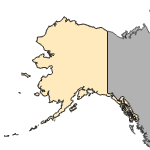Hemigrapsus sanguineus
(Asian shore crab)
Crustaceans-Crabs
Exotic |
|
Common name: Asian shore crab
Synonyms and Other Names: Japanese shore crab, Pacific crab
Taxonomy: available through
www.itis.gov
Identification: The Asian shore crab has a square-shaped shell with 3 spines on each side of the carapace. The carapace color ranges from green to purple to orange-brown to red. It has light and dark bands along its legs and red spots on its claws. Male crabs have a distinctive fleshy, bulb-like structure at the base of the moveable finger on the claws.
Size: Adults range from 35 mm - 42 mm in carapace width.
Native Range: Hemigrapsus sanguineus is indigenous to the western Pacific Ocean from Russia, along the Korean and Chinese coasts to Hong Kong, and the Japanese archipelago.



|

Alaska |

Hawaii |

Puerto Rico &
Virgin Islands |

Guam Saipan |
Hydrologic Unit Codes (HUCs) Explained
Interactive maps: Point Distribution Maps
Nonindigenous Occurrences:
Hemigrapsus was first recorded in the United States at Townsend Inlet, Cape May County, New Jersey in 1988 (Balabam et al. 2001). This species is now well established and exceptionally abundant along the Atlantic intertidal coastline of the United States from Maine to North Carolina (MIT Sea Grant). It is actively breeding and expanding its population within its nonnative range. Because the species is tolerant of a wide range of environmental conditions, it is likely that the invasion will continue along the US coastline. Established in Stewart B. McKinney National Wildlife Refuge, Connecticut (USFWS 2005). Established in Hudson River and its tributaries and Oyster Bay National Wildlife Refuge, New York (USFWS 2005; Daniels 2005)
Table 1. States with nonindigenous occurrences, the earliest and latest observations in each state, and the tally and names of HUCs with observations†. Names and dates are hyperlinked to their relevant specimen records. The list of references for all nonindigenous occurrences of Hemigrapsus sanguineus are found here.
Table last updated 12/17/2025
† Populations may not be currently present.
Means of Introduction: It is not known how this species was introduced to the United States Atlantic coast, but many speculate that adults or larvae were brought by incoming ships of global trade via ballast water discharge.
Status: Preliminary evidence shows that rockfish and seagulls may prey upon Hemigrapsus. Parasites, which help control populations of Hemigrapsus in its native range, are not present along the US Atlantic coast. The shore crab may continue to expand its range along the US Atlantic coastline until it reaches its salinity and temperature tolerance levels. Scientists are monitoring changes in native species, tracking the shore crab's spread along the coastline, and conducting experiments to increase their knowledge of basic biology and ecology of this species. Ballast water management is also being researched to reduce or eradicate new introductions from occurring.
Impact of Introduction: Because this species has a very broad diet, it has the potential to affect populations of native species such as crabs, fish, and shellfish by disrupting the food web. It also occupies habitats very similar to our native mud crabs, possibly overwhelming and dominating their habitat. This potential impact on native species populations may be a result of direct predation or competition for a food source. Hemigrapsus may compete with larger species, like the blue crab, rock crab, lobster, and the nonnative green crab. Recent trends show numbers of shore crabs are steadily increasing while native crab populations are declining. These opportunistic omnivores may also pose threats to coastline ecosystems and aquaculture operations. There are still many questions to be answered by scientists about impacts this species may pose to biodiversity in those ecosystems affected.
References: (click for full references)
Balabam, M., L.Whitlow, S. Day, and A. Locke 2001. Marine biological invaders - Bay of Fundy and Gulf of Maine (October 29 - November 9) http://www.fundyforum.com/tdarchive/td10.html
Author:
Richerson, M.M.
Revision Date: 4/30/2018
Citation Information:
Richerson, M.M., 2025, Hemigrapsus sanguineus (De Haan, 1835): U.S. Geological Survey, Nonindigenous Aquatic Species Database, Gainesville, FL, https://nas.er.usgs.gov/queries/FactSheet.aspx?SpeciesID=183, Revision Date: 4/30/2018, Access Date: 12/17/2025
This information is preliminary or provisional and is subject to revision. It is being provided to meet the need for timely best science. The information has not received final approval by the U.S. Geological Survey (USGS) and is provided on the condition that neither the USGS nor the U.S. Government shall be held liable for any damages resulting from the authorized or unauthorized use of the information.